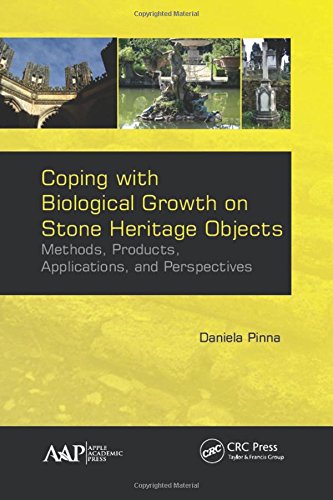

Most ebook files are in PDF format, so you can easily read them using various software such as Foxit Reader or directly on the Google Chrome browser.
Some ebook files are released by publishers in other formats such as .awz, .mobi, .epub, .fb2, etc. You may need to install specific software to read these formats on mobile/PC, such as Calibre.
Please read the tutorial at this link: https://ebookbell.com/faq
We offer FREE conversion to the popular formats you request; however, this may take some time. Therefore, right after payment, please email us, and we will try to provide the service as quickly as possible.
For some exceptional file formats or broken links (if any), please refrain from opening any disputes. Instead, email us first, and we will try to assist within a maximum of 6 hours.
EbookBell Team

5.0
30 reviewsCoping with Biological Grown on Stone Heritage Objects: Methods, Products, Applications, and Perspectives offers hands-on guidance for addressing the specific challenges involved in conserving historical monuments, sculptures, archaeological sites, and caves that have been attacked and colonized by micro- and macroorganisms. The volume provides many case studies of removal of biological growth with practical advice for making the right choices. It presents detailed and updated information related to biocides and to alternative substances, features that will be valuable to dealing with these challenges. The author’s goal is to provide access to information and offer the conceptual framework needed to understand complex issues, so that the reader can comprehend the nature of conservation problems and formulate her/his own views.
From bacteria to plants, biological agents pose serious risks to the preservation of cultural heritage. In an effort to save heritage objects, buildings, and sites, conservators’ activities aim to arrest, mitigate, and prevent the damages caused by bacteria, algae, fungi, lichens, plants, and birds. Although much has been learned about these problems, information is scattered across meeting proceedings and assorted journals that often are not available to restorers and conservators. This book fills the gap by providing a comprehensive selection and examination of international papers published in the last fifteen years, focusing on the appropriate methods, techniques, and products that are useful for the prevention and removal of micro- and macroorganisms that grow on artificial and natural stone works of art, including wall paintings. Results on new substances with antimicrobic properties and alternative methods for the control of biological growth are presented as well.
The book also emphasize issues on bioreceptivity of stones and the factors influencing biological growth and includes an outline of the various organisms able to develop on stones, a discussion on the bioprotection of stones by biofilms and lichens, a review of the main analytical techniques, and a section on bioremediation.
This volume will be a valuable reference for cultural heritage conservators and restorers, scientists, and heritage-site staff involved in conservation and maintenance of buildings, archaeological sites, parks, and caves.